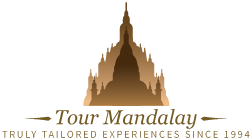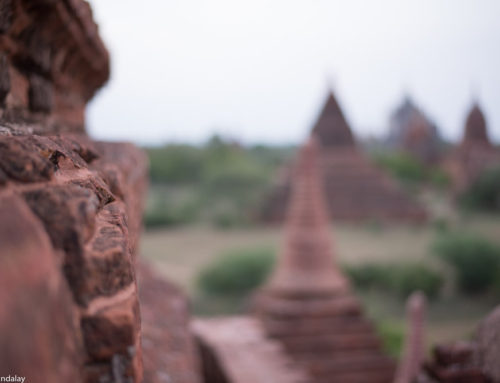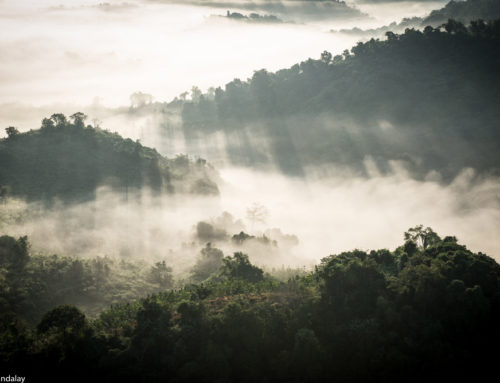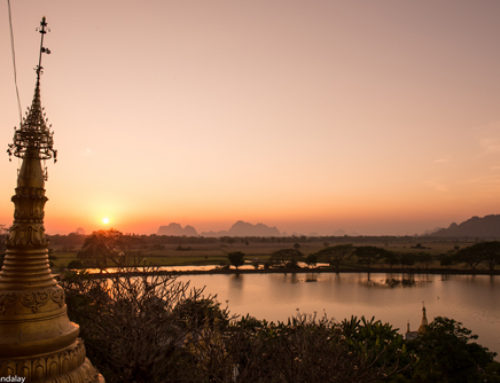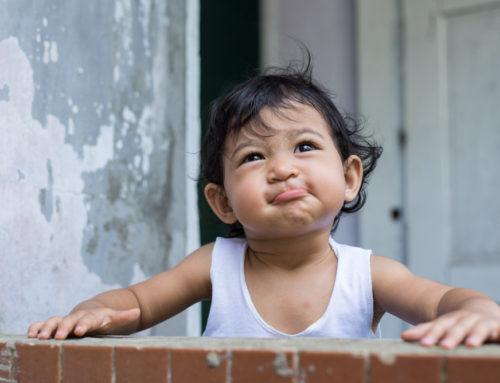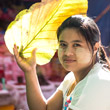Myanmar shares its borders with five countries; Thailand, Laos, China, Bangladesh and India. This, combined with the 135 officially recognised ethnic groups* has led to a wonderfully diverse and delectable culinary paradise. Over a two week period, this itinerary includes visits to the classic sights of seven key destinations, along with some of the best foodie experiences and eateries we could think of. Rather than include lunch and dinner throughout to make the arrangements look better value, you will notice that restaurant recommendations have been provided instead; this not only helps to give you access to a greater selection of food on the day, but it will also give you more flexibility to chop and change things on the ground**.
*The exact number of officially recognised ethnic groups in Myanmar is frequently debated. Some of the groups that feature on the officially recognised government list are unknown.
**In the case of Tour Mandalay making a reservation on your behalf, we would politely like to ask that you honour that. A lot of the restaurants we have chosen to feature are family owned and small in size.
An example of a typical Myanmar Umami itinerary can be found below. Please note that this is merely a suggestion and all of the arrangements can be tweaked and tailored to your heart’s content. By clicking on the day, it’s possible to read more about the general logistics and featured excursions.
Day 1 - Yangon (Airport transfer / rickshaw ride / Kheng Hock Keong Chinese temple / 19th Street / The Strand's Sarkies Bar)
On arrival, you will be met by your local representative and escorted directly to your hotel to freshen up. Transfer to Lan Thit jetty where you’ll stop for a beer and become better acquainted with your guide. After finishing a refreshing beer (or non-alcoholic beverage of your choice), transfer to 19th Street using a trishaw, passing by Kheng Hock Keong en route. Here you’ll find lots of BBQ stalls accompanied by long rows of plastic tables and chairs. Whilst eating your fill of chargrilled meat, fish and vegetables, sit back, relax and enjoy the atmosphere of this lively thoroughfare. For the ultimate sense of contrast, finish the evening with a cocktail at The Strand Hotel before returning to your hotel.
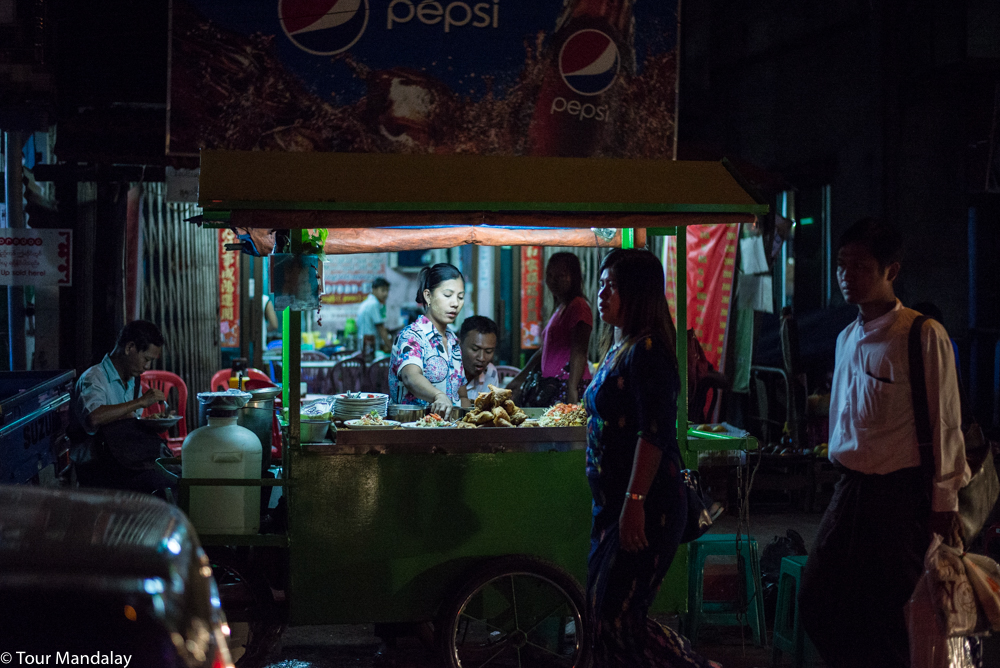
NOTE: Dinner at 19th Street and cocktails at The Strand not included. We think it’s done best this way seeing as there’s plenty of options to choose from and it gives you complete flexibility.
Day 2 - Yangon (Rangoon Tea House / Colonial walking tour / LinkAge training restaurant / Shwedagon Pagoda)
Skip breakfast at the hotel and make your way to the popular Rangoon Tea House for a scrumptious bowl of organic mohinga, a fish broth soup typically served with rice noodles. It might not sound appetising, but this is considered by many to be the national breakfast dish of the country. You’ll find this served in local tea stations at the crack of dawn for as little as MMK300 (20 cents). We’d recommend you try the version here however because Rangoon Tea House doesn’t cut corners when it comes to the quality of ingredients used and the chef can tell you where everything’s sourced. The owner, Htet Myet Oo, has made it his personal mission to revolutionise Myanmar cuisine with ultimate goal of introducing it to the world stage. Seeing as he was officially inaugurated into the Forbes 30 Under 30 Asia in 2016, he’s clearly got off to a good start. The restaurant’s also a great place to enjoy some Myanmar tea or Lah Phet Yay; with an easy to understand English menu, this will prepare you very well for later on in the tour.
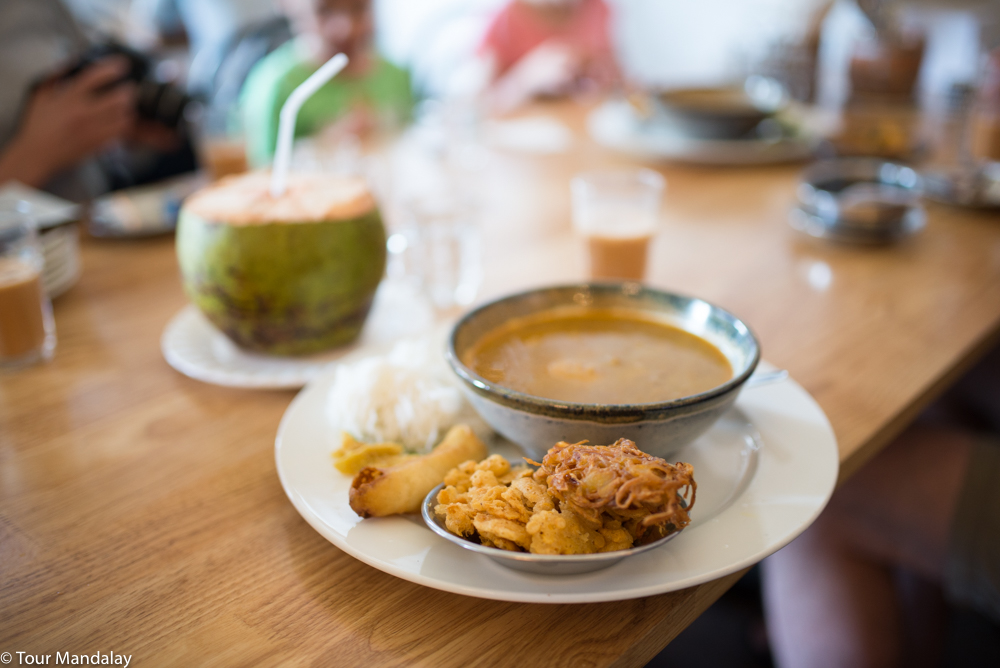
Rangoon Tea house has a tendency to get very busy at lunch and dinner time whereas breakfast tends to be a bit quieter. Make no mistake, it might look polished and a little bit mainstream, but everything you experience here is 100% Myanmar made. In the future, we wouldn’t be surprised if Htet’s successful in opening up branches in upscale destinations such as London, Paris and New York.
NOTE: Reservation only, mohinga and tea not included – due to it being an acquired taste, you may want the option of ordering something more familiar.
After finishing breakfast, make your way to the nearby Sule Pagoda, the point that was used by Lieutenant Alexander Fraser’s to make the central point of colonial downtown’s design. Together with your guide you’ll explore the cracks and crevices that make up Yangon’s nostalgic downtown quarter. Visit buildings such as the City Hall, High Court, Rowe & Co Building (once the Harrod’s of South East Asia) and the old Reserve Bank of India (now the Yangon stock exchange).
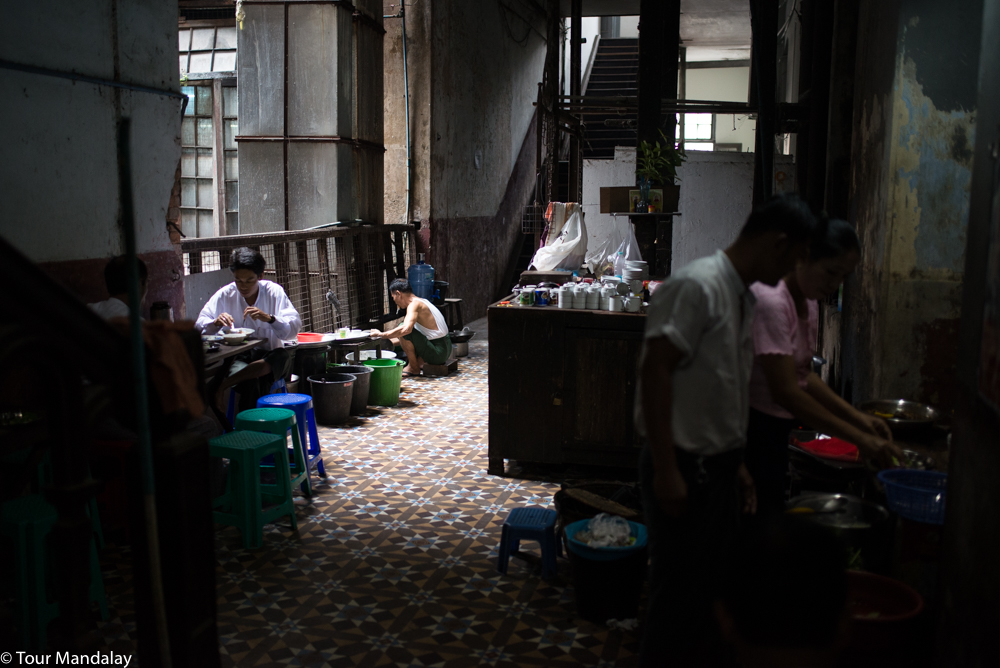
We will stop for a lunch break at LinkAge restaurant and art gallery, a vocational training restaurant where street and marginalised youth are taught essential hospitality skills.
NOTE: Reservation at Linkage only, lunch not included.
From here we’ll then take a short walk to the country’s grandest colonial relic, The Secretariat. Both an iconic feat of British pomp and a decaying, mysterious presence, the Secretariat (also known as the Ministers’ Building) was the home and administrative seat of British Burma. Today it is perhaps remembered less for that and more for the assassination of Myanmar’s independence hero, General Aung San (also Daw Aung San Suu Kyi’s father). On the 19th July 1947, he was gunned down along with six cabinet ministers and a bodyguard, for reasons that are still unknown to this day.
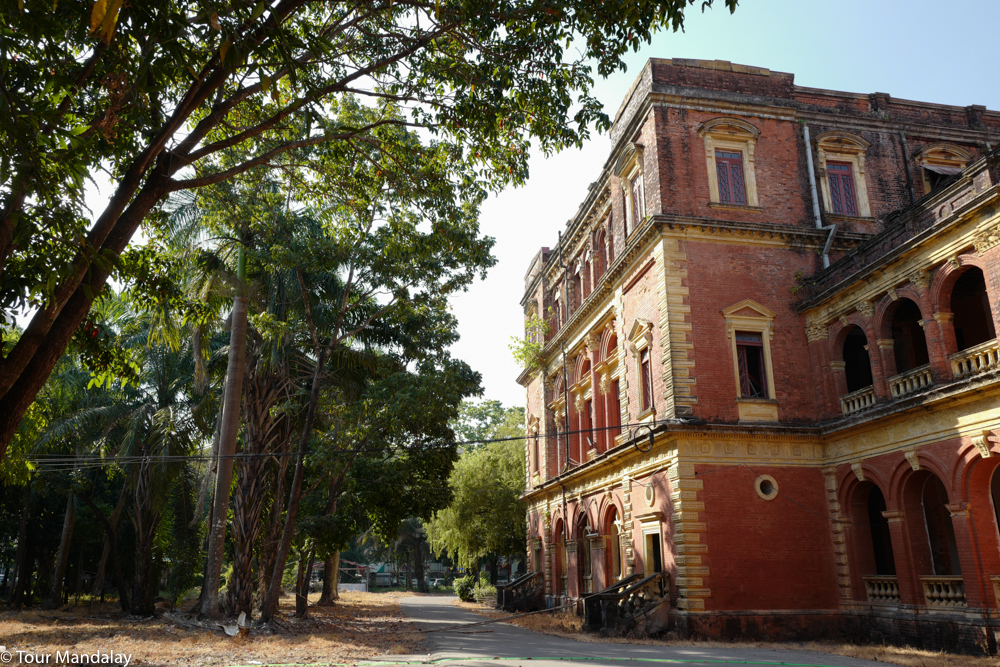
Having concluded the colonial walking tour, transfer by car to what Rudyard Kipling described as, “A golden mystery that upheaved itself on the horizon – a beautiful winking wonder that blazed in the sun”. The 99-metre tall Swedagon Padoga is the country’s most famous landmark; one that we believe looks extra impressive at sunset. The current hti (a golden umbrella that adorns the top of pagodas) is decorated with approximately 85,000 jewels, with the centrepiece being a 76-carat diamond. History and opulence aside, the highlight for most is brushing shoulders with the people as they go about paying their respects to Shwedagon itself and the 150 smaller pagodas and shrines that surround.
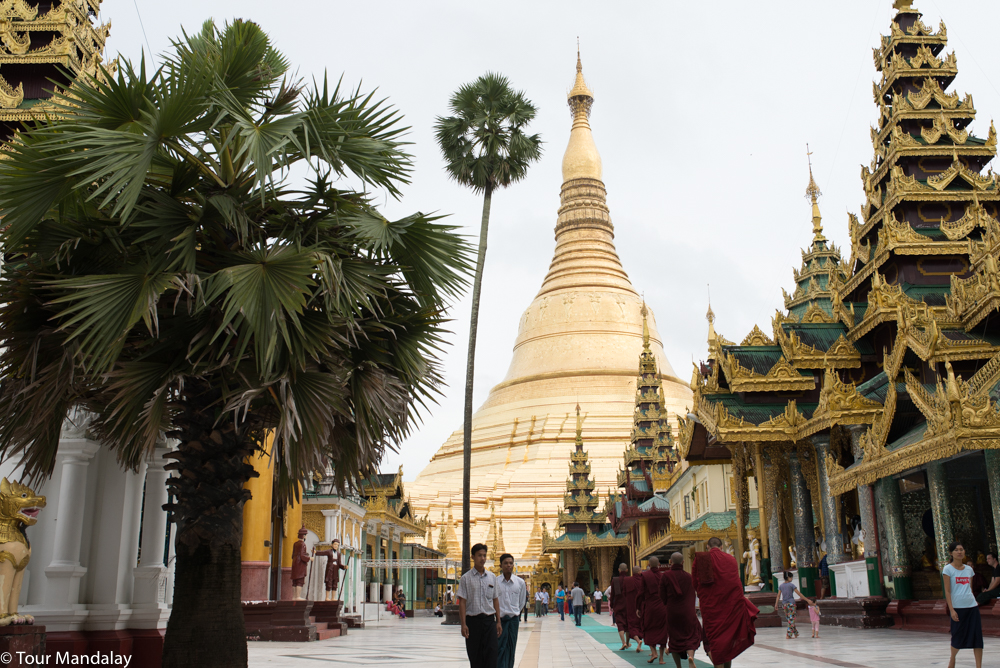
This evening, we would recommend eating dinner at ORNG Kitchen. This is easily one of the most unassuming fine dining restaurants in Yangon and hence, it is one of the most exciting. Chef Orng is the brains behind it, classically trained in Edinburgh, he focuses on using fresh, sustainable, locally sourced produce to create his European-inspired dishes. The cuisine is well-executed and fantastic value but most of all, it is served in a no frills, relaxed setting. Food of this standard for such a reasonable price is incredibly difficult to find in Myanmar so it’s no surprise the expats are raving about it.
NOTE: Reservation at ORNG Kitchen only, dinner not included.
Day 3 - Yangon to Loikaw (Airport transfer / domestic flight / Spicy sausage making / Loikaw Weaving and Vocational Training Centre / Hta Nee La Leh / Oxcart ride to Seven Lakes)
Transfer to Yangon domestic airport this morning in time for your direct flight to Loikaw, the capital of Kayah State. Shortly after being greeted by our ITC (International Trade Centre) recognised local partner, you will be transferred to the home of a local artisan to learn about the production of spicy Kayah sausage.
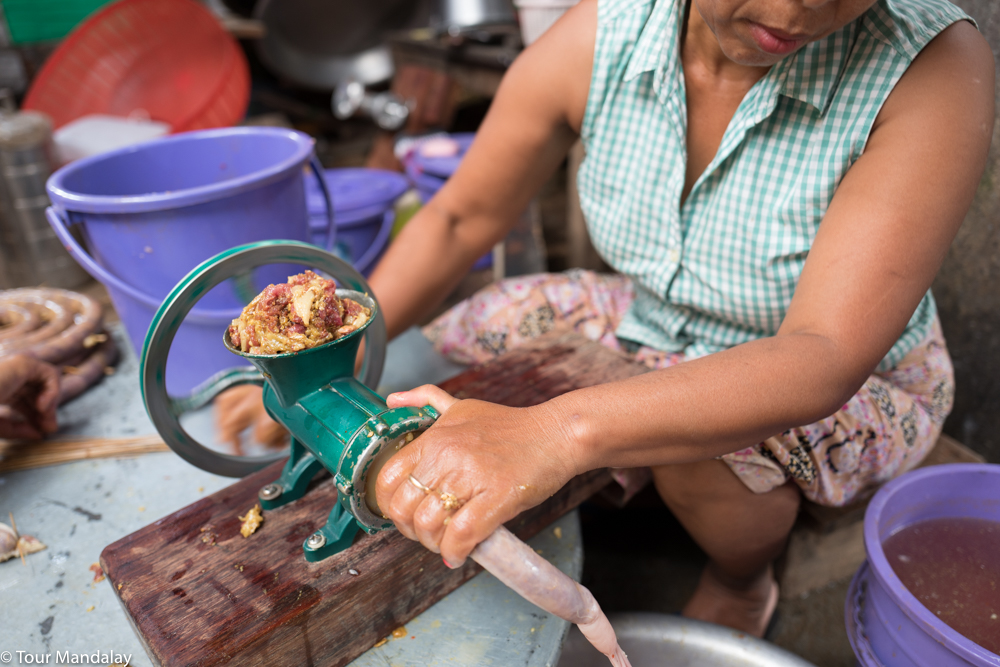
The next stop is the Loikaw Weaving and Vocational Training Centre. Start by exploring the centre’s luscious organic garden; here you will learn about the origin of the natural colours used in Kayah clothing, the dyeing process and traditional weaving techniques.
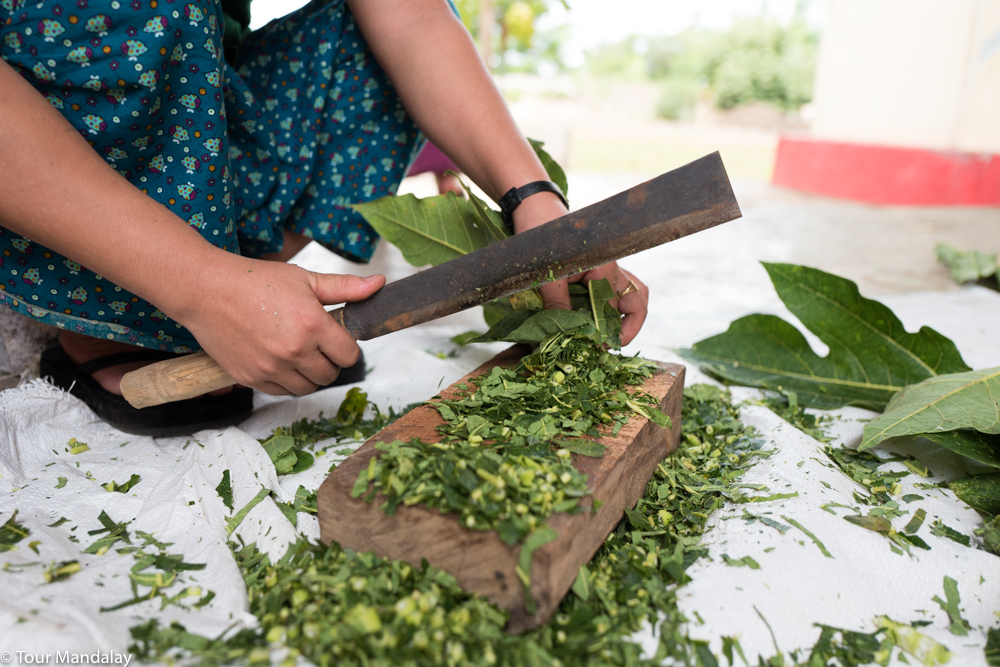
We will then travel by car to Hta Nee La Leh, a small animist village located approximately 45 minutes away. A local representative will greet us on arrival to provide a short overview of the village, its people, history and customs. Having surely worked up an appetite, a barbecue lunch will be prepared and served in a resident’s home nearby.
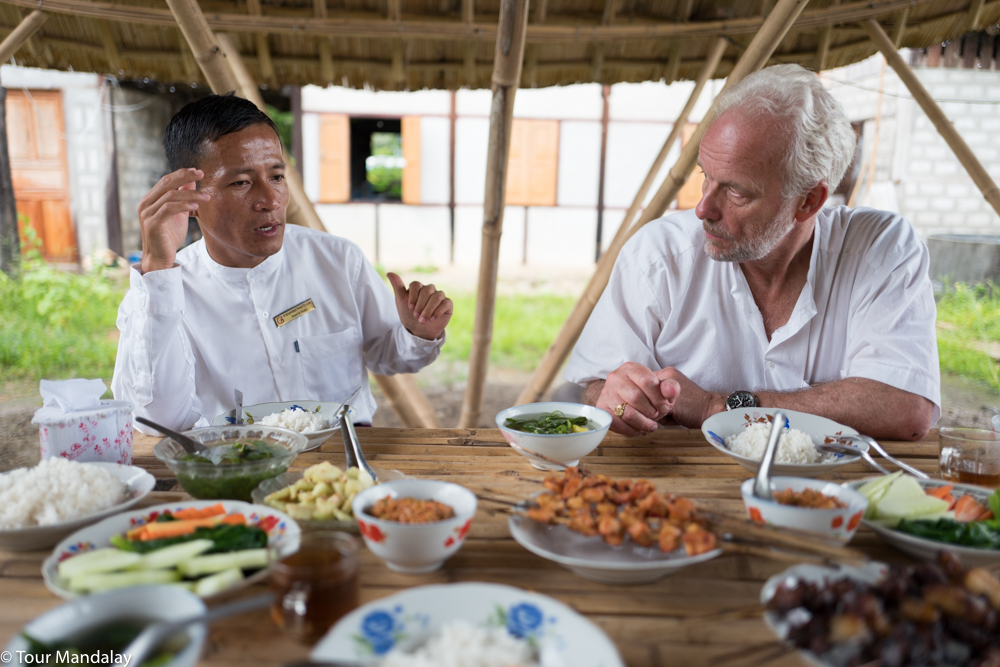
One of Hta Nee La Leh village’s most distinct features is its Kayhtoebo, a traditional animist hunting shrine. Spread over an area a little bit larger than a football pitch, this is an extremely sacred area of land typically used to carry out animal sacrifice. This is the perfect place to learn more about traditional Kayah religious beliefs, festivals and fortune telling techniques.
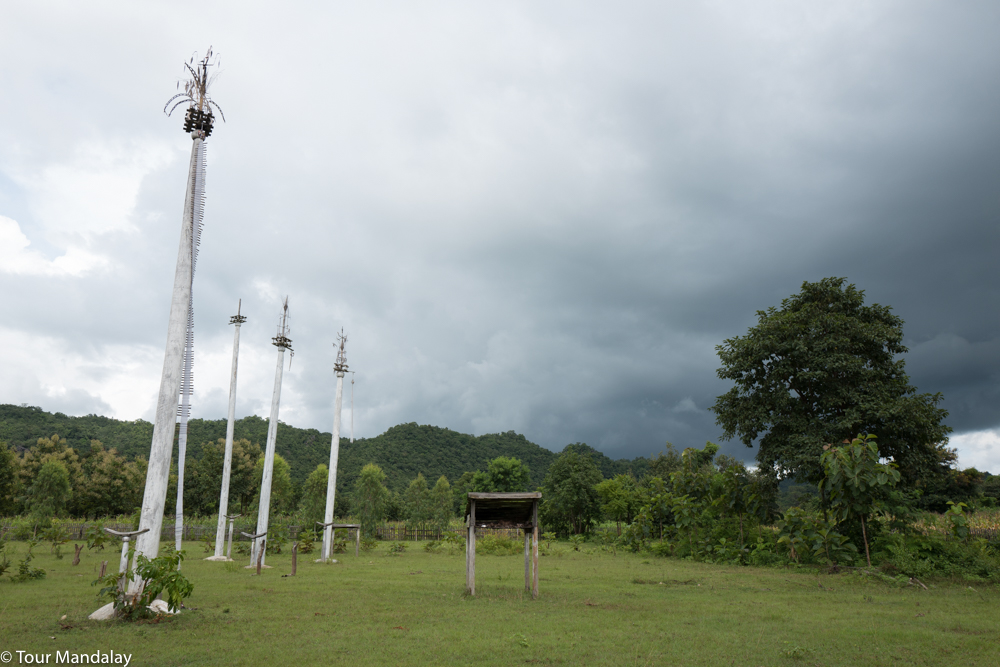
Following this, pay a visit to a musician’s house to listen to some live traditional music, followed by a stop at another to learn about traditional dress (these experiences may need to be substituted depending on which villager is available on the day).
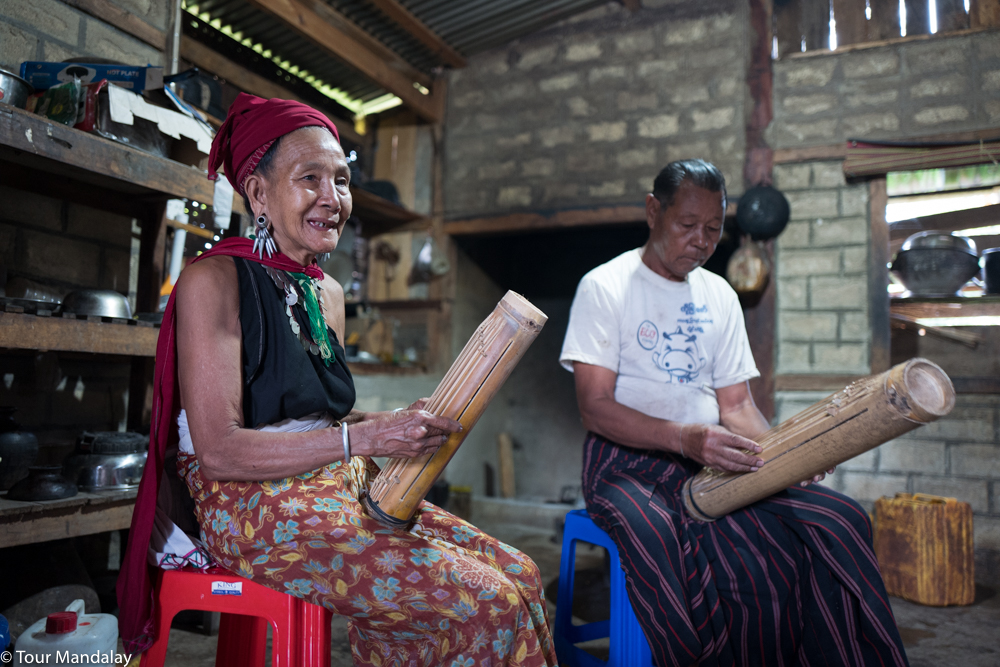
To end the day in style, hop on board an ox-drawn cart to the scenic Seven Lakes. Surrounded by mountains and tropical jungle, the lake provides the perfect setting from which to put your feet up and take in the sunset.
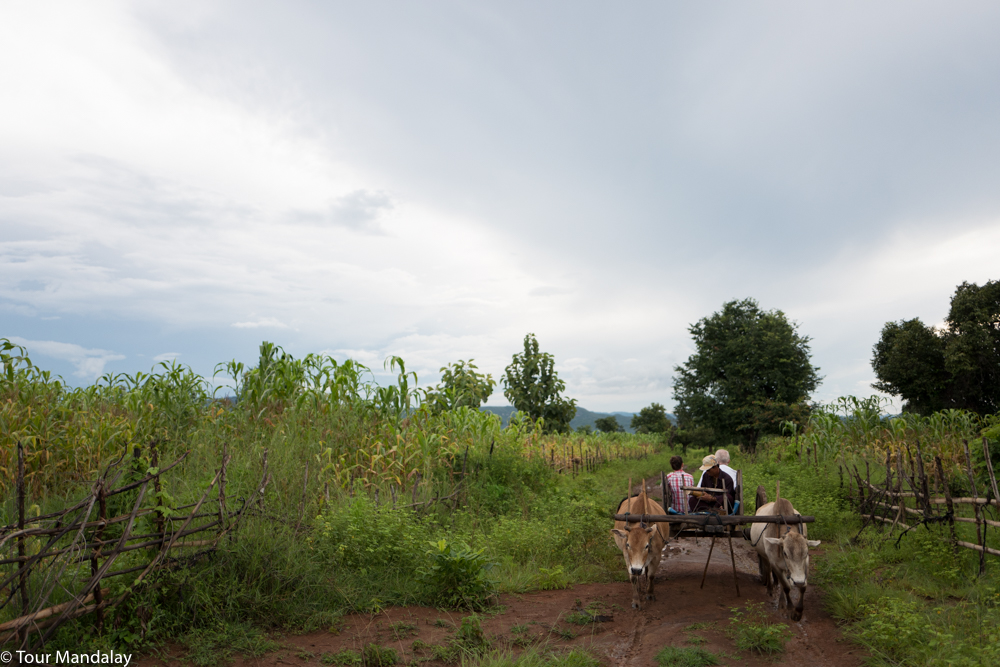
Before returning to your hotel, stop at a local beer station to enjoy the sausages purchased from the artisan earlier.
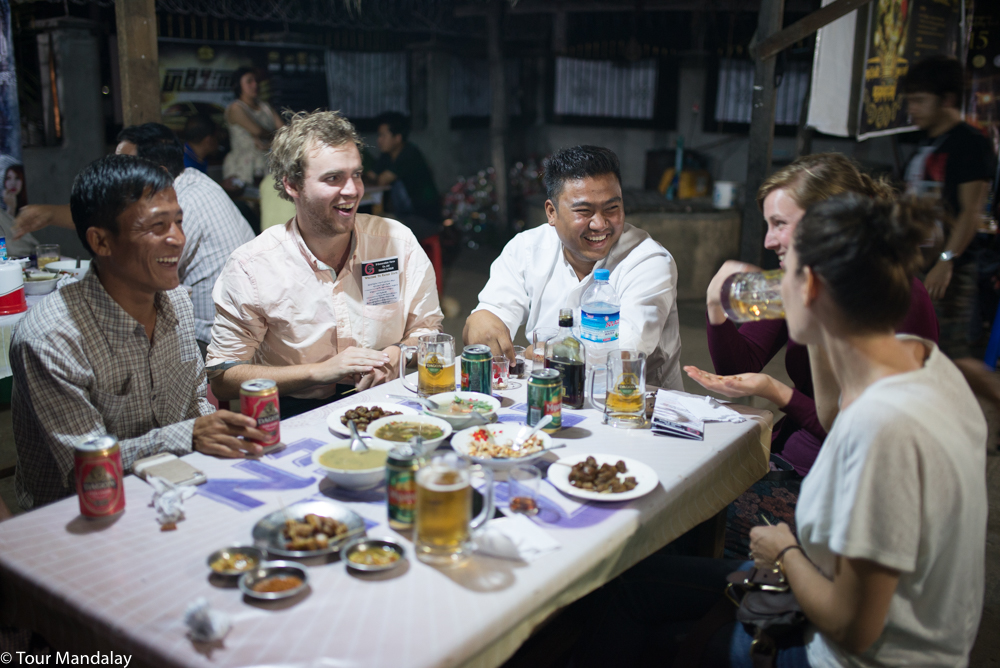
For dinner this evening, we’d recommend ordering something from Loikaw Lodge’s home cooked Italian menu. Granted, it’s not very Myanmar, but they take great pride in making their own pasta here and it’s absolutely delicious!
NOTE: Dinner not included, reservation not necessary.
Day 4 - Loikaw (Demawsoe market / Pan Pet)
Start the morning with a visit to Demawsoe market. This will take approximately 30-minutes to reach by car and is a great way to experience the region’s rich ethnic diversity first-hand, as well as the impressive variety of locally sourced cooking ingredients (living and none).
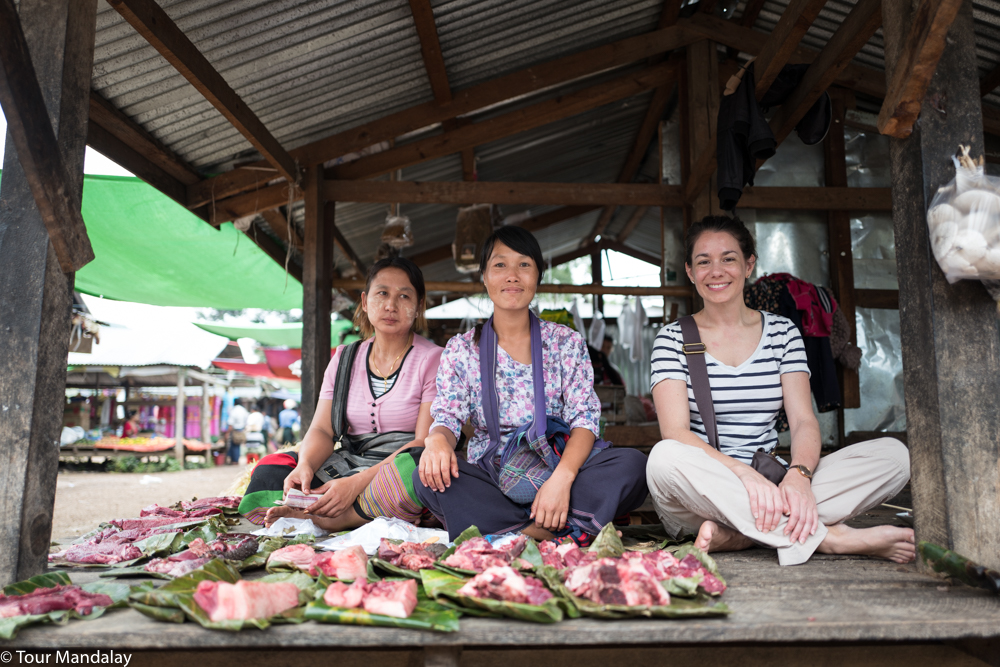
NOTE: Demawsoe market is only open on Wednesdays and Saturdays. If your trip does not coincide with these dates, you will get the opportunity to explore Yangon further afield.
From Demawsoe, drive approximately one hour to the settlement of Pan Pet, which is technically a large village made up of five smaller hamlets. Predominantly inhabited by members of the Kayan Lahwi, a visit here offers a fascinating insight into the customs and culture of this world-famous tribe. With the help of a local community guide, we’ll visit the houses of some willing residents to learn more about the village, their lives and respective professions. Many people still rely on traditional industry including textiles and jewellery to make a living here, the production of which we’ll get to witness whilst sat naturally conversing with a large pot of fermented rice wine.
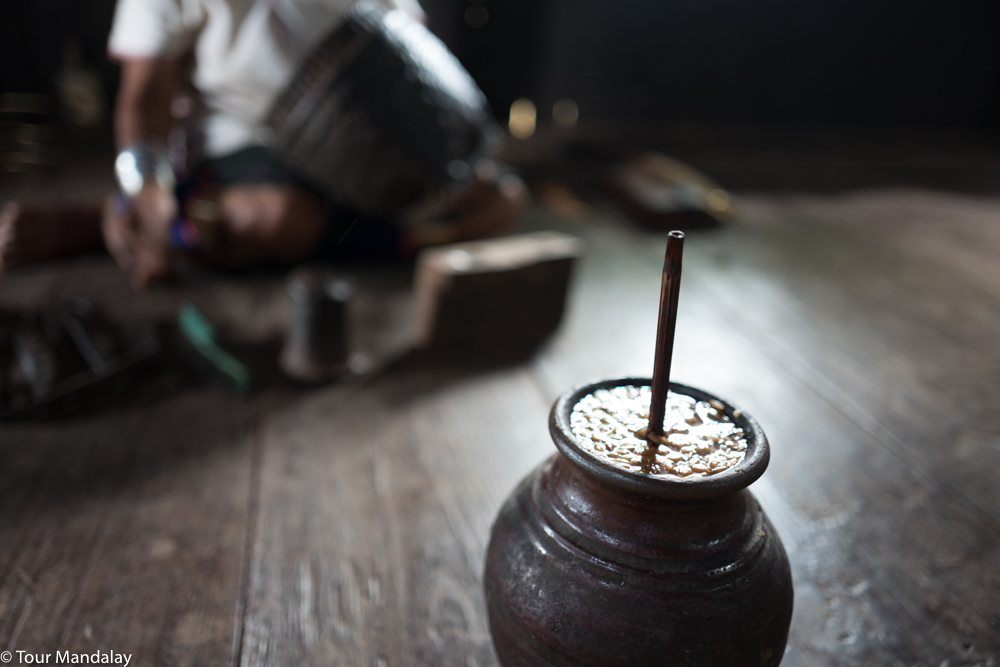
After saying farewell to your hosts, embark upon a moderately challenging trek to a remote hilltop pagoda. Various edible plants can be found en route, with some believed to have lifesaving medicinal properties. The community guide will point these out, whilst sharing some of the popular myths and legends still recited by the village elders to this day.
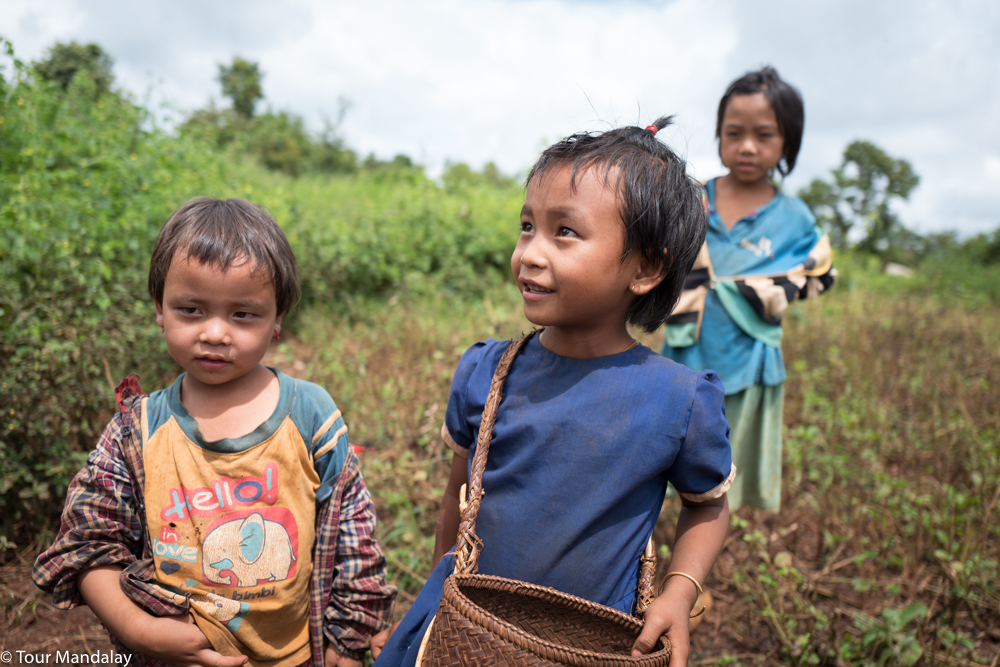
Before reaching the summit, recharge your batteries and appetite with a pre-prepared jungle picnic under some shade. It’s then only a short walk until you reach the summit and your eyes are rewarded with a 360-degree view of Pan Pet along with its picturesque rural surrounds.
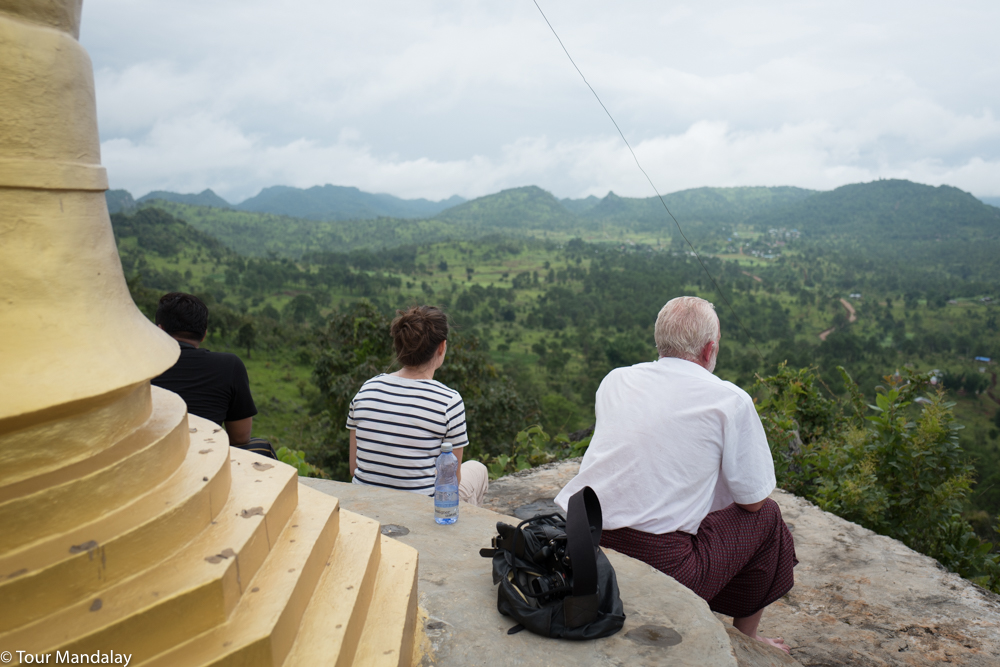
Traversing the mountain all the way to the other side, we’ll reconvene with our driver, who’ll escort us to the house of some singer songwriters for a live performance and a refreshing cup of tea. Here you can also try your hand at traditional billiards, a board game that involves flicking circular coloured plastic counters into holes.
Return to your hotel via Thiri Mingalar Taungkwe Zedi or Mya Kalat Pagoda; both are ideal spots to take in the region’s frequently colourful and vibrant sunsets.
This evening, you may want to eat at Sunday Club (not open on Sundays!) or back in the comfort of the restaurant at Loikaw Lodge. If you do decide to eat there, we’d recommend ordering the Burmese dinner set, made mostly from fresh local ingredients sourced from Loikaw market (this will need to be pre-ordered the day before).
NOTE: Dinner not included, reservation not necessary.
Day 5 - Loikaw to Kalaw (Overland drive / Everest Nepali restaurant / exploring the colonial relics of Kalaw)
Ideally, you’ll want to check out early this morning as we have a five-hour overland drive in store. Winding us from Loikaw into the luscious, patchwork-like rolling hills of the Shan countryside, this is a beautiful drive that’s full of scenic contrast. Our destination is Kalaw, a former British colonial hill station, parts of which still resemble parts of the UK to this day. Passing by markets, Pa’O villages and farmers making their way to work on ox drawn carts, there will be no shortage of local scenes for you to enjoy. Should you wish to stop to further explore, feel free to instruct your driver and guide.
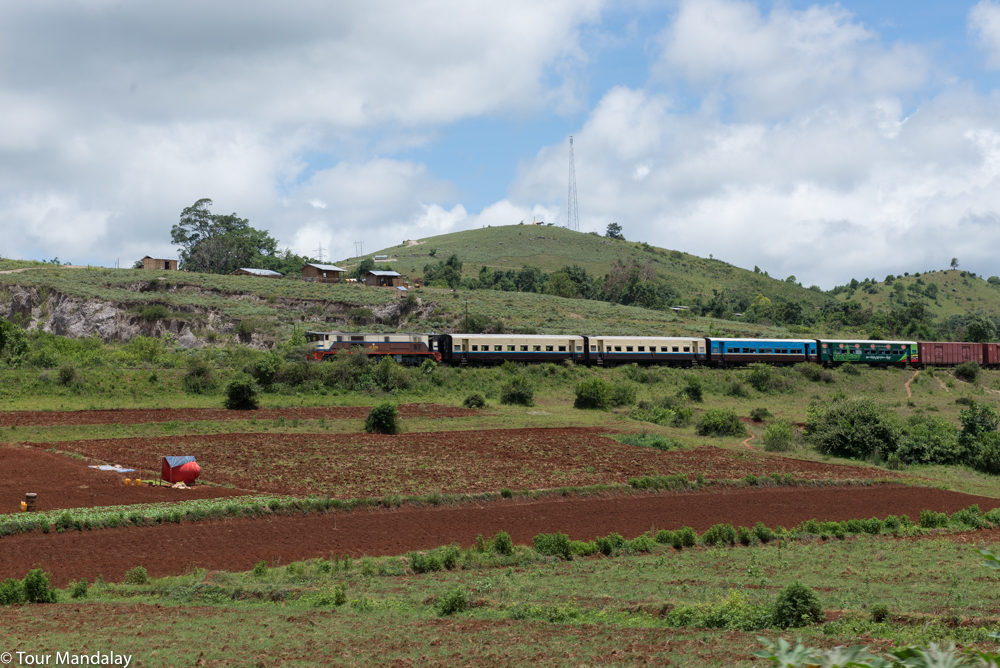
During colonial times, the British employed the service of Nepali Gurkhas to help with general administration and the creation of infrastructure. Due to them being used to colder climates at a high altitude, they were immediately made to feel at home here and a significant population still remains to this day. As any true foodie knows, Nepali cuisine is one of the best in the world and it would be a crime to pass up on the opportunity of eating it whilst we’re here. With this in mind, we’ll stop for lunch at the Everest Nepali restaurant, a simple option but the best of its kind in town. It’s also a great opportunity to meet members from the Myanmar-Nepali community that regularly come to dine here.
NOTE: Reservation only, lunch not included.
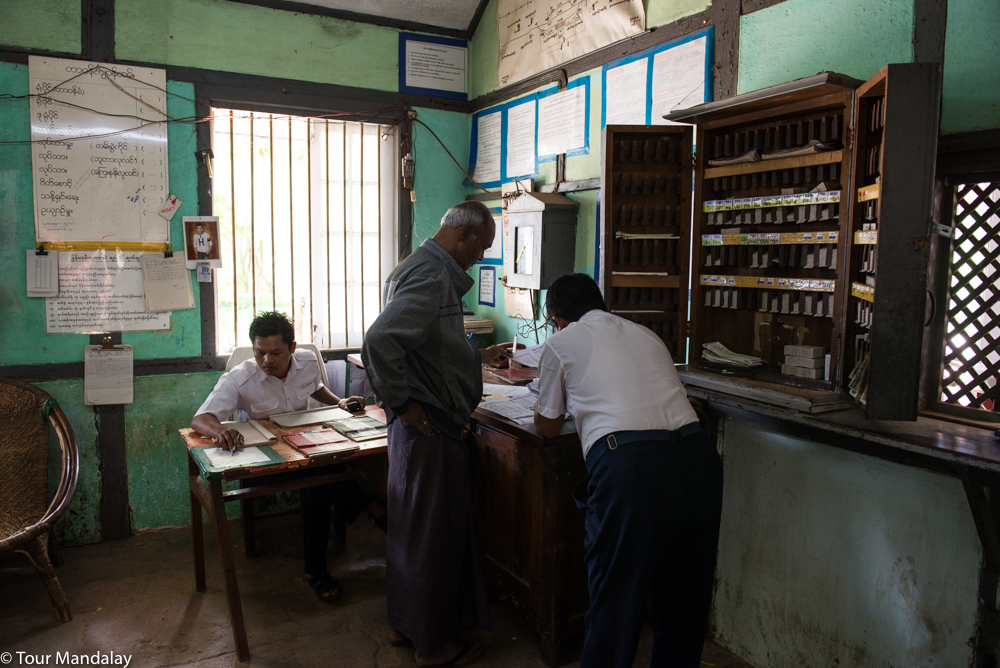
The remainder of the afternoon will be spent exploring some of the area’s long forgotten colonial relics, our favourite of which is the railway station complete with its seemingly unchanged Station Master’s Office.
Day 6 - Kalaw to Inle Lake (Green Hill Valley / overland journey / Red Mountain Vineyard)
Elephant camps are on the increase in Myanmar, especially now that the government has temporarily halted logging in the country’s most severely deforested regions. Without being able to guarantee the welfare of the elephants at these camps, or the health and safety of the tourists that visit them, Tour Mandalay are reluctant to recommend all but one camp in Myanmar.
Founded in 2011, Green Hill Valley is a camp that focuses primarily on providing care to elephants that are no longer fit to work. Rather than pulling in tourists solely for the purpose of riding, it instead seeks to educate people (from home and abroad) about the threats this endangered mammal faces, whilst at the same time protecting the natural environment they inhabit.
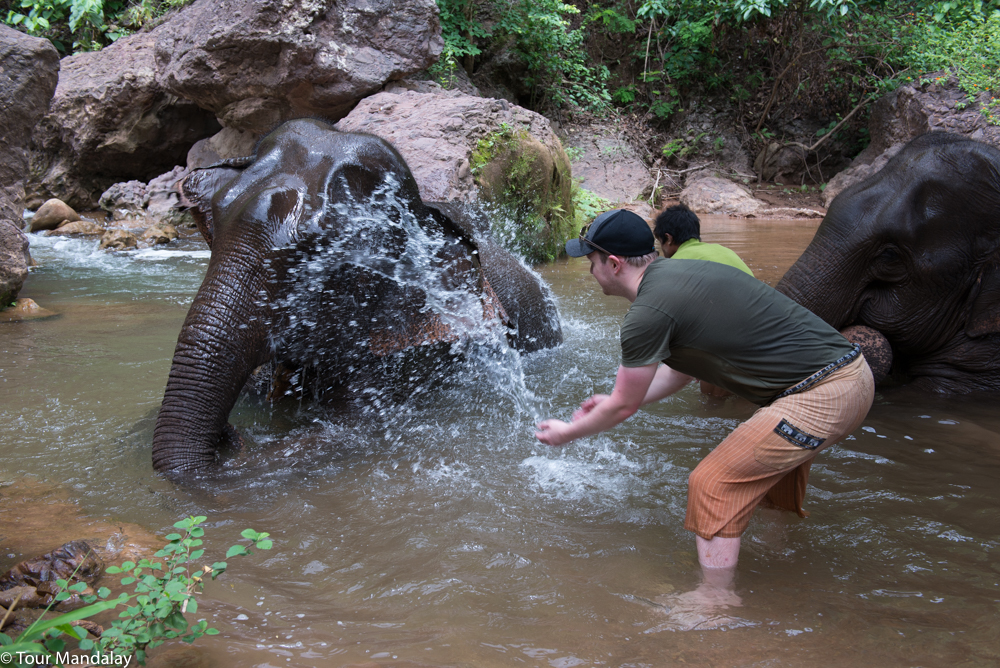
To mix the program up a little, we would suggest hiking to the camp with one of Green Hill Valley’s dedicated trekking guides. Descending through tropical jungle, this mostly downhill trek will take approximately two hours to complete. Shortly after arriving at the camp, we will join the elephants in a shallow river nearby and give them a good scrub down with the mahouts. Once bath time has finished, accompany the elephants back to their bamboo shelters to lend a hand with feeding (who says this tour can’t be gourmet for the elephants?).
Just before saying goodbye to the elephants, you will also get the opportunity to plant a tree as part of Green Hill Valley’s reforestation program. The is not only to assist with the regeneration of the elephant’s habitat, but also to educate the visitors about the importance of reforestation and risks posed by deforestation.
A tasty, locally sourced lunch will be served at the camp’s restaurant.
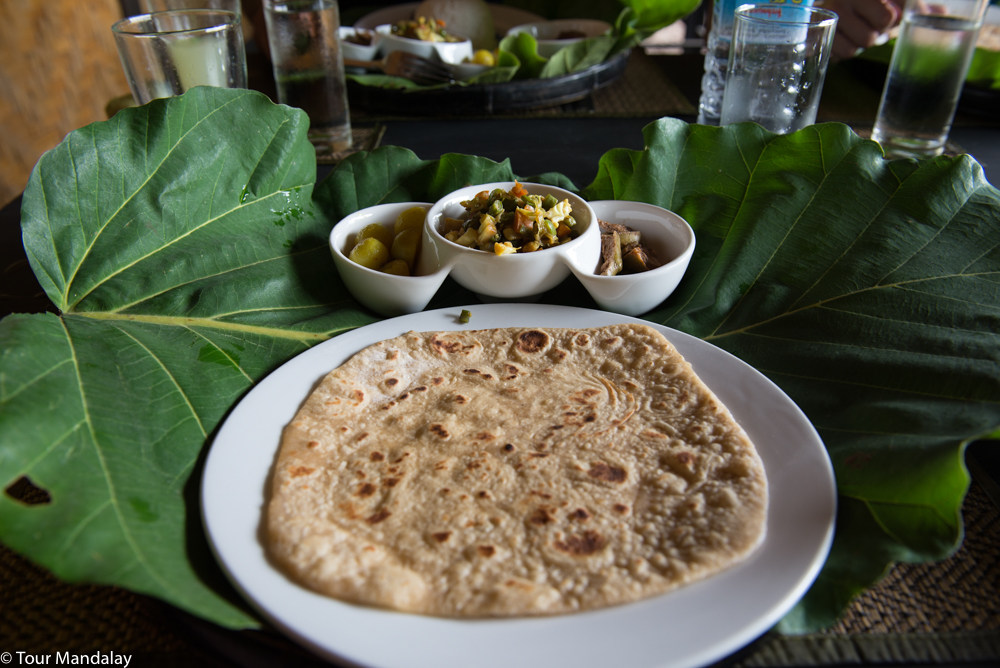
Leaving Kalaw behind, we will now drive 2.5 hours east to Inle Lake, a large fresh water lake famous for its floating gardens and one-legged Intha rowers. Visitors are often surprised to learn that the region’s also home to two vineyards (Red Mountain and Aythaya), and we feel that no trip here is complete without a visit to at least one. Seeing as we will pass by en route, and it boasts the most impressive view, on this occasion it makes sense to stop at Red Mountain.
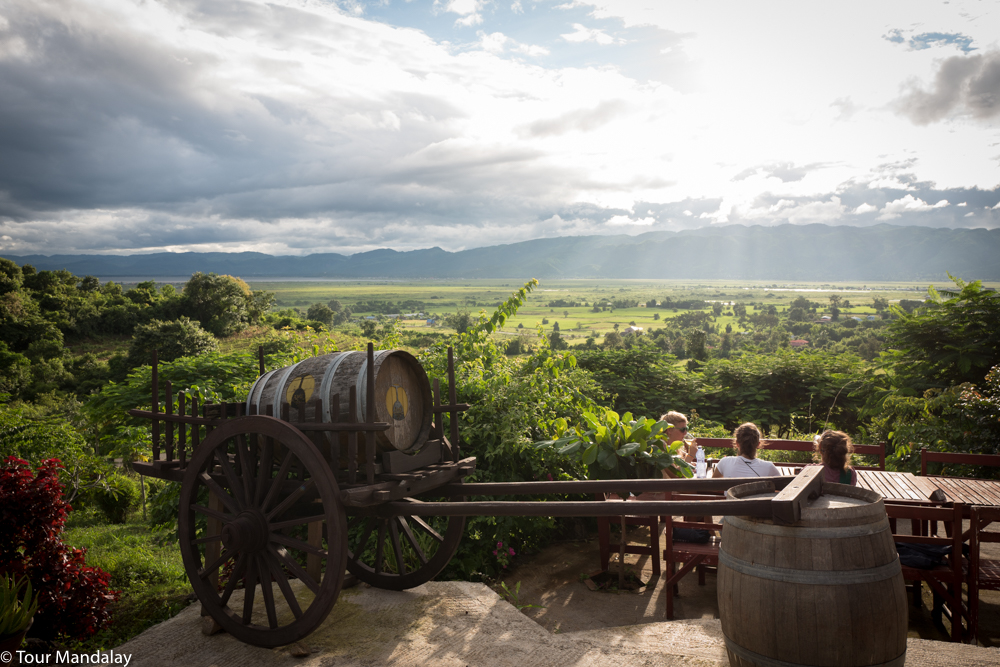
This evening, enjoy a Shan dinner at your hotel.
NOTE: Dinner not included, reservation not necessary.
Day 7 - Inle Lake (View Point Shan cooking class / explore Inle Lake's cottage industry)
Start the morning with a visit to the local market with View Point’s head chef to purchase the food we’ll need to prepare a special gourmet Shan lunch. The chef will provide tips on how to shop and barter, whilst pointing out any unfamiliar items. We’ll then return to View Point to prepare and cook the ingredients. Once finished, enjoy a special aperitif from the rooftop before being eating the dishes you prepared.
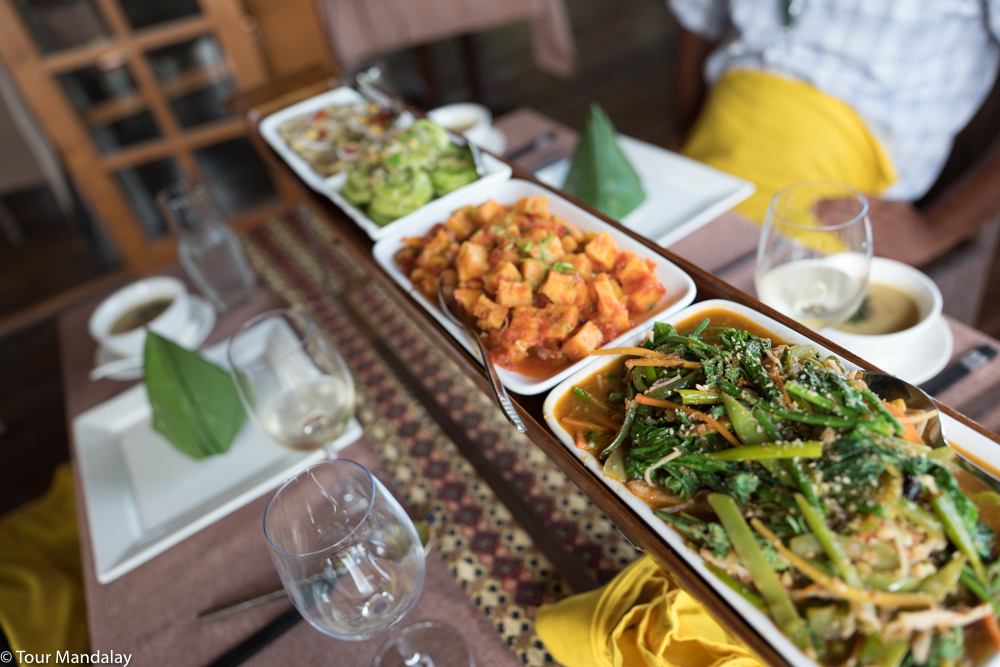
NOTE: This is a shared experience.
Spend the remainder of the afternoon exploring the open waters of Inle Lake whilst learning about local industry from textiles to cheroots.
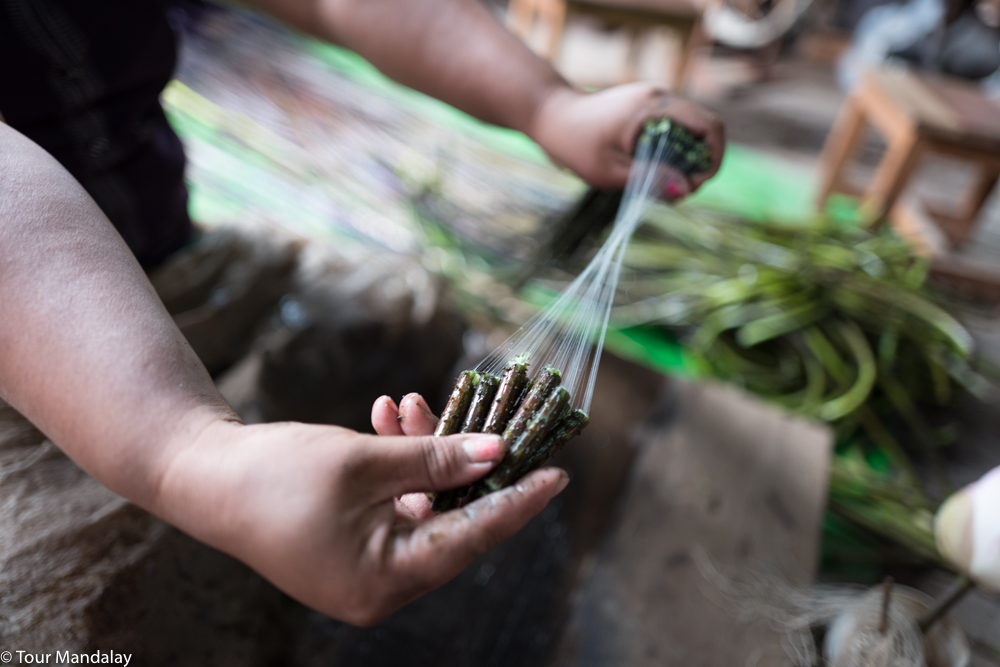
Day 8 - Inle Lake (Grasshopper Adventures bike, boat and kayak tour)
Enjoy a fun day tour by bike, boat & kayak, further exploring the lake and the colourful communities who live on and around it. Cycling at a relaxed pace on secret village trails away from the crowds, journeying by boat through canals and the maze of floating gardens and exploring the local stilt villages by kayak. This is the best way to discover the hidden side of Inle Lake, both on and around the lake.
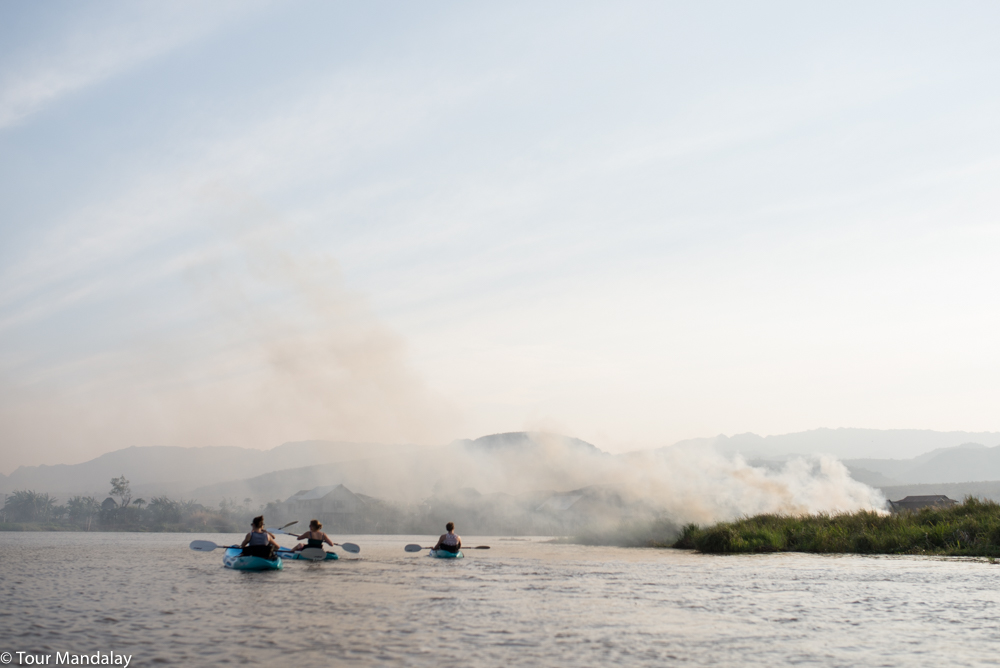
Throughout the day you’ll enjoy local delicacies and roadside snacks and lunch will be provided at a locally owned family restaurant – here you can experience traditional Burmese cooking at its finest!
NOTE: The tour starts at 08:00 and finishes late afternoon. This excursion is a shared experience of up to 12 people operated by Grasshopper Adventures.
Day 9 - Inle Lake to Bagan (Airport transfer / domestic flight / explore Bagan's most iconic temples and pagodas / Secret Home / lacquerware workshop visit / Irrawaddy sunset cocktails / Dinner at Moon (2) Be Kind to Animals)
Leaving the rolling green countryside behind, fly to Bagan, Myanmar’s capital of culture and home to thousands of ancient pagodas and temples. Considered one of the richest archaeological sites in Asia, the area is testament to the power and pious nature of Myanmar’s past rulers.
Although it won’t be possible to visit every temple during your time here, start by exploring some of the most iconic. Our first recommendation would be the golden Shwezigon, a pagoda that has been damaged by earthquakes several times over the centuries, but still stands whilst retaining some of its original features. An unexpected highlight of any visit here, especially for photographers, is walking the long sunlit corridor that leads up to it. Occasionally you will find a local market being held here, with plenty of traditional and locally sourced produce on display.
For lunch, stop at Ma Kyi Kyi’s Secret House restaurant. Serving fresh, locally sourced produce in what was her living room, the restaurant boasts an abundance of charm, character and a warm homely vibe. With Myanmar and Western options, there’s something for everyone, although Myanmar comes highly recommended seeing as most of the recipes are based on Ma Kyi Kyi’s very own.
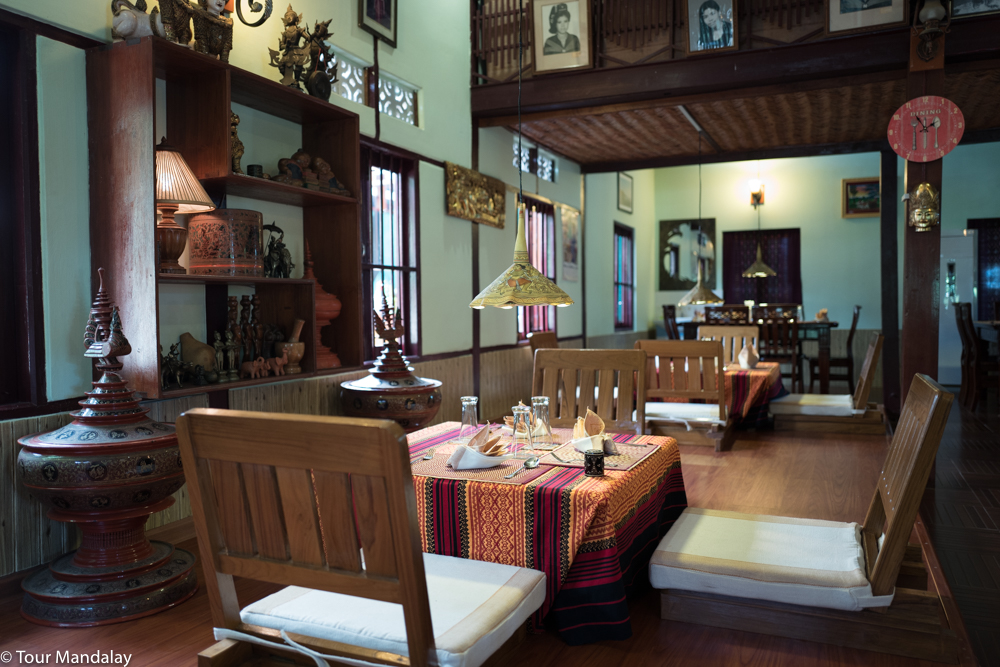
NOTE: Reservation only, lunch not included.
Another must see architectural wonder, and one of Bagan’s grandest in terms of size and design, is the 920-year-old Ananda temple. Build using a fusion of Mon and Indian inspired techniques, the temple houses four standing Buddha images, each seemingly keeping an eternal watch over the north, south, east and west entrances.
If time permits, we will next pay a visit to the workshop of one of Bagan’s most renowned lacquerware masters, U Maung Maung (easily identifiable thanks to his magnificent bushy moustache). Lacquerware has been produced in Bagan since the 11th century and still plays an important part in daily life, art and religious practice to this very day. Perhaps what is most interesting is that the production process has remained unchanged for centuries, giving a sense of authenticity and an assurance that the products on display are truly authentic.

To help spread out the temple visits, we would like to recommend that you finish what will have been a busy day with cocktails on a boat at sunset.
For dinner, we would recommend eating at the uniquely named Dinner at Moon (2) Be Kind to Animals vegetarian restaurant. The dishes here are extremely creative and will be sure to satisfy even the meatiest of appetites.
NOTE: Reservation only, dinner not included.
Day 10 - Bagan to Salay via Salin (Overland journey / Chauk market / blacksmith village / U Ottama monastery / explore Salin's highlights)
This morning you will set off for Salin, a small town located 90 km south-west of Bagan. After one hour you will cross the impressive Anawrahta Bridge, named after the founder of the Pagan Empire – this connects Chauk with Seikpyu. 30 minutes later you will arrive in Ta Nyaung village, where it will be possible to visit small blacksmith workshops to personally witness the hardworking locals wielding a range of hardware ranging from knives to farming tools. Your next stop is U Ottama monastery, built in 1819, which consists of nine apartments and an underground tunnel – during the Raj days it was known as the U Ottama Fort since revolutionary soldiers took refuge there. You will then be driven for another hour before arriving in Salin, which in its heyday was a major hub for agriculture. Thanks to Salin’s irrigation system, rice could be grown all year round, even in the dry season.
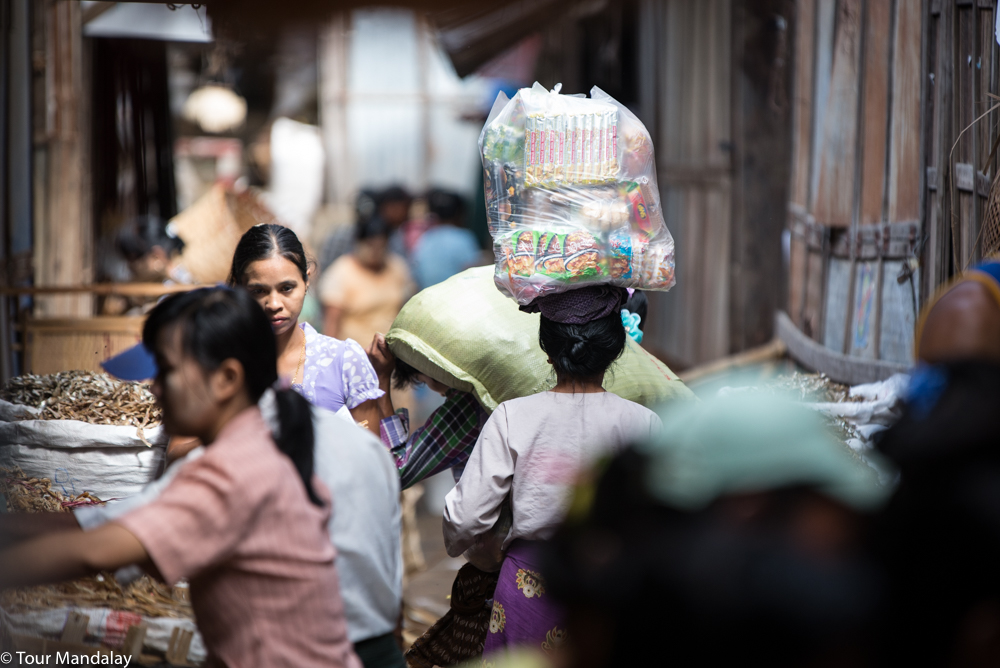
To sample some of the region’s famous rice, stop for lunch at a local restaurant en route (please note that conditions here will be very basic).
NOTE: Lunch not included, reservation not necessary.
Begin your exploration of the town by visiting Nyaunghnapin Monastery, a charming wooden monastery built in 1868 – be sure to keep an eye out for the Japanese clock, which would have been used during the Japanese occupation during WW2 and the antique bookshelf with a royal crest carved into the top. Should you wish, you can then proceed to the nearby war cemetery; the final resting place for the British soldiers who fought in the Third Burmese War (1885-87). To finish your tour, take a break by Wetthe Lake, a 1000-acre expanse dotted with thousands of lotus leaves. If you time it right, you will notice people in boats farming the lotus – this is then taken back home and made into a rare lotus thread. The area has also been designated as bird sanctuary, making it the perfect place to carry out wildlife spotting and photography. Later this afternoon you will travel to Salay, a journey of approximately two hours.
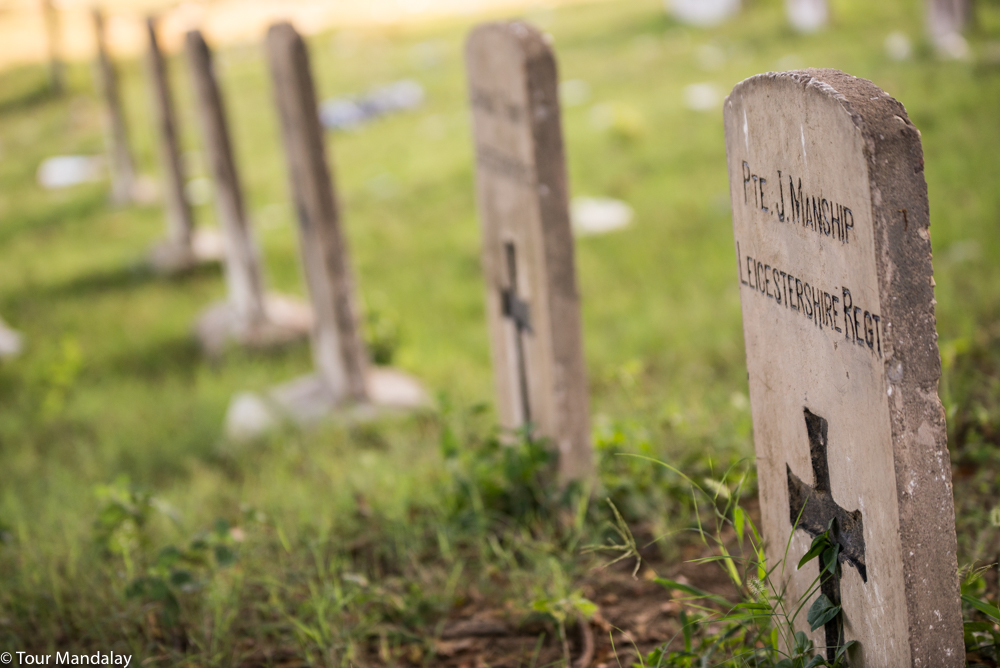
Dinner will be served at Salay House, a restored colonial mansion that operates as a restaurant, souvenir shop and mini museum. Owned by the same people behind Salay River View Inn, the food served here is all fresh, locally sourced and of a very high quality considering the remoteness of the region.
NOTE: Dinner not included, reservation not necessary.
Day 11 - Salay (Explore Salay's highlights on foot)
Start your exploration of Salay with a visit to the fabled Yoke-Sone-Kyaung, an impressive teak monastery famous for the intricate wood carvings that adorn its exterior. Inside you can view a selection of rare Buddhist antiques, the likes of which are hard to find anywhere else in the country. Equally as interesting is the 19th century building that neighbours the monastery, used by the present-day monks as sleeping quarter. This was built by the daughter of an influential Burmese merchant / politician called U Pyo Gyi. U Pyo Gyi also made the formal request to King Thibaw to build Yoke-Sone-Kyaung, whom after accepting, famously donated the teak and other materials required for the monastery’s construction.
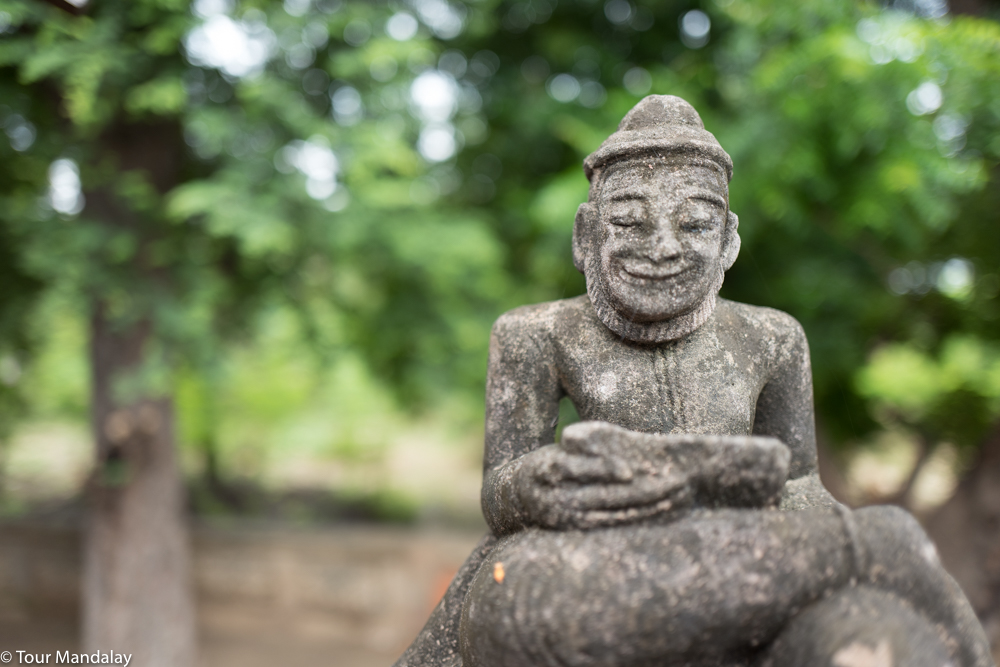
NOTE: Yoke-Sone-Kyaung is closed on Mondays.
Across the road from Yoke-Sone-Kyaung is Man Paya Pagoda, home to the largest lacquerware Buddha in Myanmar. Dating back to the 13th century, this truly is an impressive piece of Buddhist art and it is one of the very few figures that allows visitors to take a peek inside. Five minutes here will be more than enough, but it is well worth the stop, even if it’s just to admire the size and craftsmanship of this sacred image.
Depending on the time, walk back to Salay House for lunch or continue exploration of the town.
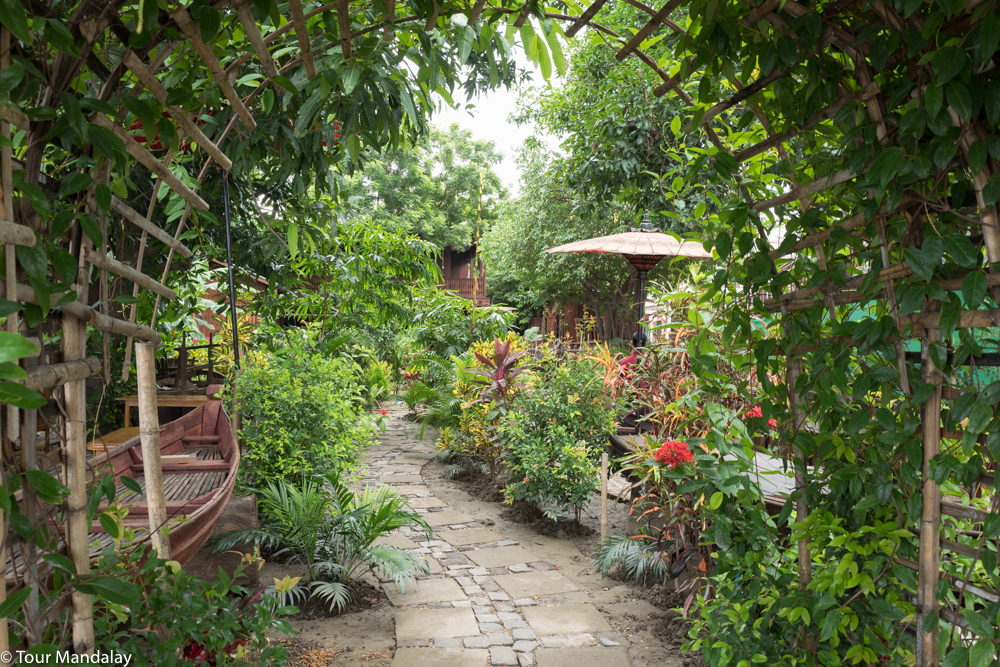
NOTE: Lunch not included, reservation not necessary.
Following lunch, we will visit U Pyo Gyi’s grand mansion, another unique colonial relic decorated with a variety of exquisite stucco designs. Now looked after by a caretaker and his family, a visit here provides a useful insight into the life of a man who was rich, often dabbled in political affairs, dangerously handsome and notorious for breaking the hearts of those he courted.
We hope a surprise highlight will be the little-known Sasanayaungyi monastery, inside of which you can find a dusty, cobweb-covered prayer chest, which currently stores hundreds of ancient Buddhist manuscripts. If one of the resident monks is not busy with his daily chores, perhaps you can ask if it is okay to take a peak inside?
Finish the day with a stop at an independently run shop selling ‘Sa Lay Zithi’, or sweet plum. The shop in question used to make and sell everything onsite, but due to the popularity of this eye-popping treat, the owner now produces everything in a factory on the outskirts of town. The plums are still packaged and coated in sugar here, so it’s still worth dropping by to sample this regional delicacy.
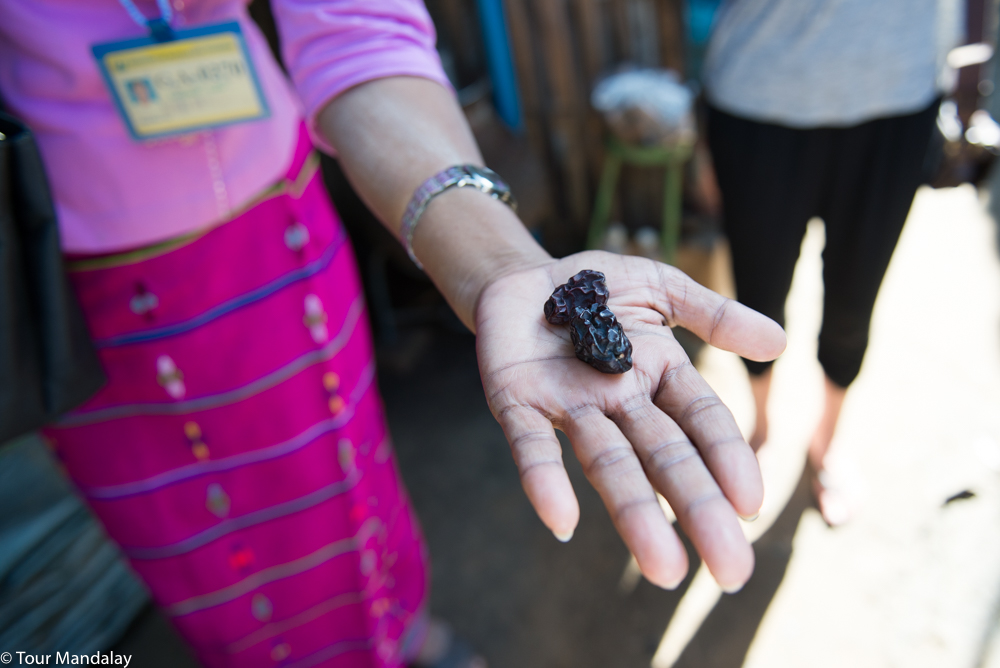
Day 12 - Salay to Mandalay (Daung Lann Gyi / Mandalay city highlights / Amarapura / Indian Thadka)
Transfer to Nyaung U (Bagan) airport in time for one of the first flights to Mandalay. Having being heavily bombed by the Japanese in 1942, and later again by the allied forces in 1945, little remains of old Mandalay, but that’s certainly not to say it should be written off. It has risen from the ashes to become a young, lively and vibrant city, famous for its food, culture, education and arts.
Depending on the time of your arrival, we’ll first stop for a stop of lunch at Daung Lann Gyi, a traditional Burmese restaurant that serves its dishes on large, drum-like circular trays. Before tables and chairs, Myanmar people would sit around trays such as these with friends and family, pile on top a mountain of food (salads, rice, curries, soup, or whatever they could get hold of) and eat using only their hands. With nothing to separate the food, it was common for the items to mix together, with the soup usually being left until they very end. Nowadays, the dishes are separated by smaller bowls and come with spoons for serving, but the communal feel of the experience is still the same.
NOTE: Reservation only, lunch not included.
Start your exploration of the city with a trip to one of Mandalay’s bustling local markets, a great way to naturally cross paths with the city’s local residents as they go about their daily food shop. From here we’ll then hop into a rickshaw to the Golden Palace Monastery, passing by the palace walls and moat en route.
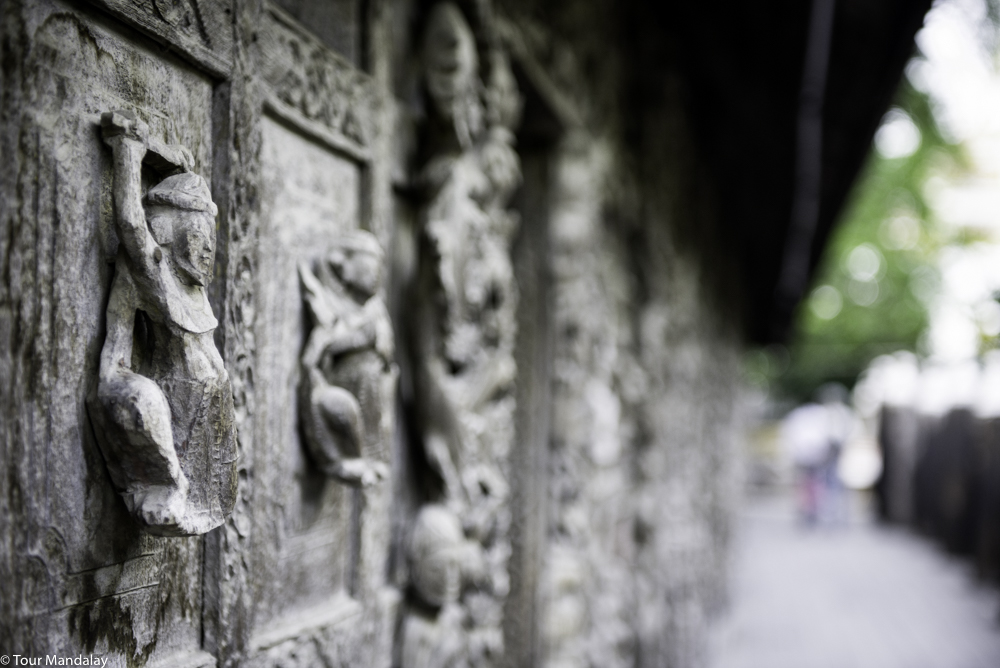
The Golden Palace Monastery, or Shwenandaw as it’s also known, was built in 1878 by the last monarch of Myanmar, King Thibaw. Previously it served as the apartment of King Mindon (King Thibaw’s father), but due to Thibaw believing the building was haunted by his father’s spirit, he had it moved and converted into a monastery. Thanks to this decision, the building survived the heavy bombing and is the only building of the original Royal Palace that still stands today. Although the colour from the gold gilding has mostly faded, the intricate teak carvings and glass mosaics provide an immediate reminder of how grand this monastery, and the original Royal Palace, once would have been.
From here we’ll then take a short drive to Kuthodaw Pagoda, home to the world’s largest book. Built by King Mindon (as you’ve correctly assumed, an important figure in Myanmar’s history), the main stupa is surrounded by 729 stone slabs, inscribed on both sides with a page of text from the Tipitaka (the entire Pali Canon of Theravada Buddhism). Sadly, the complex you see today is just a shadow of its former self, no thanks to British soldiers stripping it of its most valuable materials shortly after the annexation of Mandalay in 1885. From top to bottom, the pagoda stood bare for just over a decade.
From Kuthodaw Pagoda, drive 30 minutes out of town to Amarapura, the penultimate royal capital of Myanmar from 1842 – 1859 (it was also the capital 1783 – 1821). The main attraction here is the 1.2-kilometre-long U Bein Bridge, believed to be the longest teak wood bridge in the world. Popular with international and domestic tourists alike, it tends to get crowded here in the afternoon, but that doesn’t take away from the historical importance and the fact it’s authentically local in style. If timed for sunset, some phenomenal views of the bridge can be observed from a quiet bank on the adjacent side.
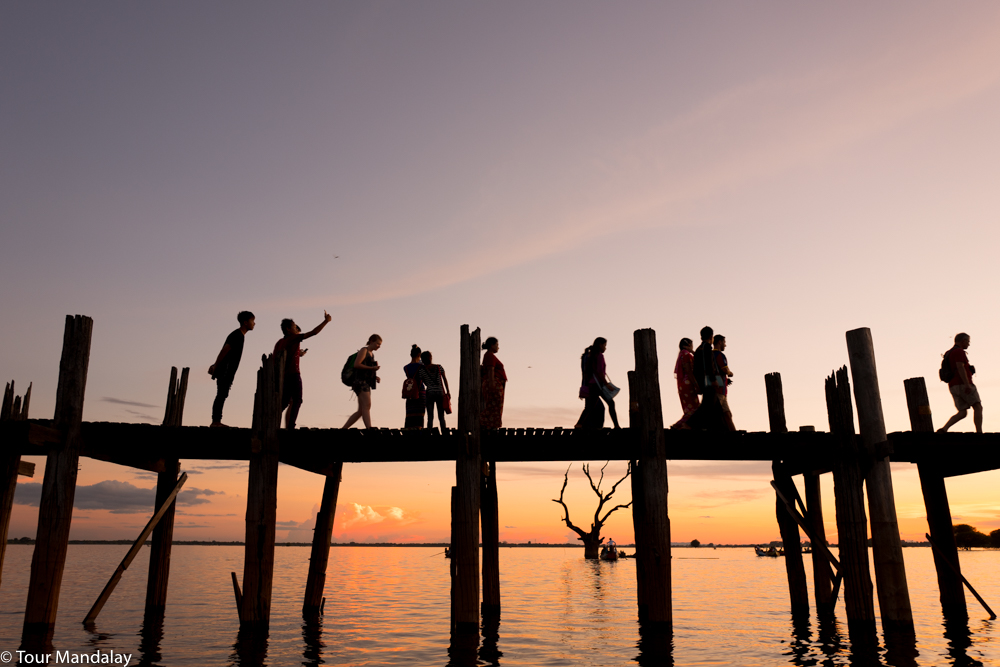
Thanks to Mandalay having a large Indian population, you’ll find no shortage of eateries offering this world-famous cuisine. One of our favourites is Indian Thadka, located on 27th Street, between 63rd and 64th. Serving everything from a salted lassi to paneer phoolwari, the restaurant boasts one of the tastiest and most authentic menus around.
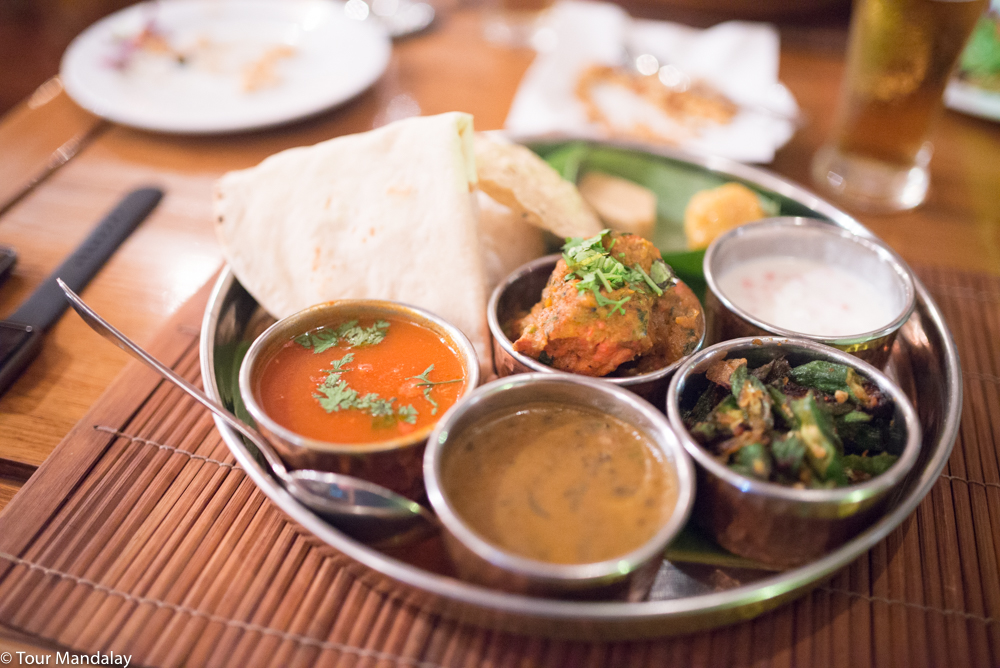
NOTE: Reservation only, dinner not included.
Day 13 - Mandalay (Grasshopper Adventures Mandalay teashop tour / Mandalay's arts and crafts district / Mahamuni / )
The most famous feature of Mandalay? Forget Mandalay Hill and the moat, the hands down winner is the common Mandalay Tea Shop. Scattered all over the city this is the place where locals sit hunched over a steaming cup of sweet tea and fresh snacks, gossiping, catching up with friends or reading the daily paper.
Whilst it differs from most Grasshopper Adventures day tours inasmuch as they don’t actually ride bicycles, it fits the bill in that it is a completely unique experience and not one that can be easily accessed by the uninitiated. The tour will run from 08:00 to 11:30.
NOTE: This is a shared experience of up to 12 people operated by Grasshopper Adventures.
Assuming you’ll want to skip lunch, after concluding the Grasshopper tour, we’ll spend a bit of time exploring Mandalay’s handy craft district – this will provide you with the opportunity to witness various demonstrations including gold-leaf making, weaving and wood carving.
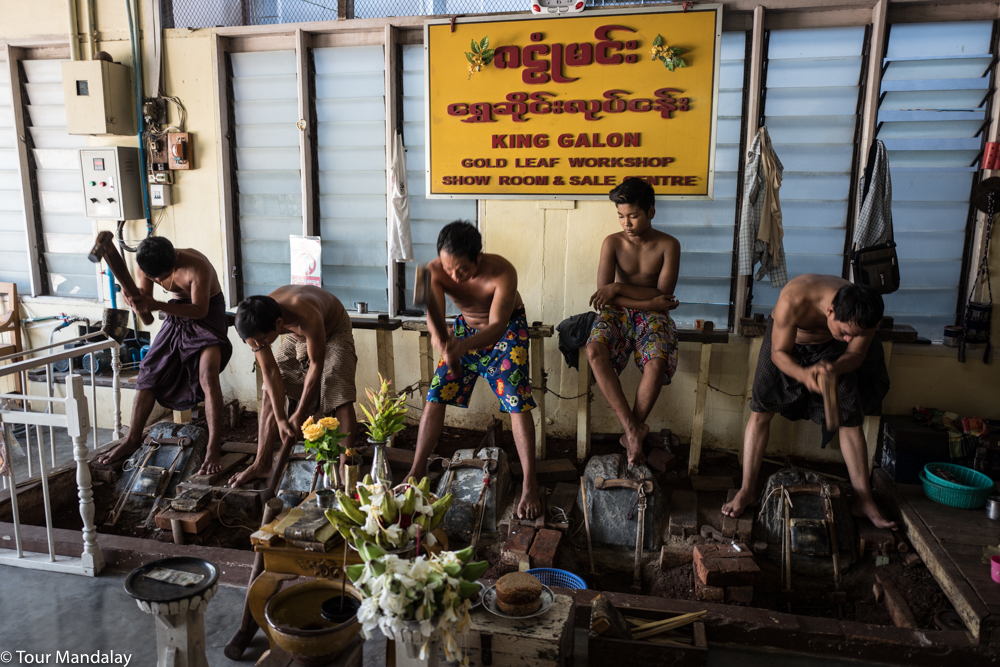
We’ll then pay a visit to the Mahamuni Buddha image, with its perfectly imperfect shape – it looks this way due to millions of gold leaf squares being donated by the devoted. Although the Buddha may look ‘at peace’, the image has actually suffered a lot over the past two centuries having been damaged by two fires and a successful robbery by some jewel-hungry thieves. Interestingly, inside the complex you will also find several old bronze statues that were taken from Angkor Wat (Cambodia) as war loot.
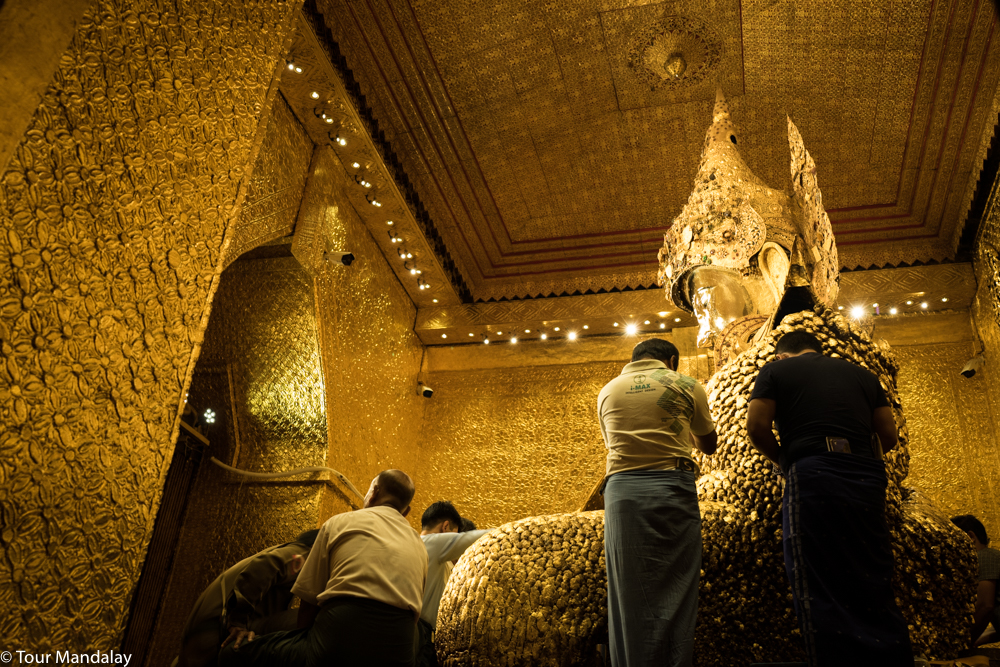
Before returning to your hotel, we’ll finish the day with a stroll through the city’s nightly vegetable market followed by a refreshing drink at a local beer station.
NOTE: Drinks not included.
Day 14 - Mandalay (Airport transfer / fly back home)
Transfer to Mandalay’s international airport in time for your flight back home.
Keen to create your own Myanmar Umami itinerary? Get in touch with a member of our team now by writing to info@tourmandalay.travel.
